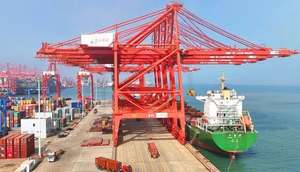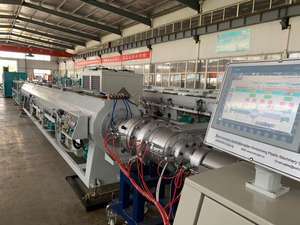
China's Export Policies: Opportunities and Strategies for Global Traders
China's export sector continues to be a significant driver of global economic activity. This article offers an in-depth look at the current policies shaping China's export landscape, the opportunities they present, and the strategies that global traders can employ to capitalize on these trends.
Robust Export Performance Despite Global Headwinds
The Canton Fair, a key indicator of China's export vitality, has shown that Chinese manufacturers are resilient in the face of global challenges. With a focus on innovation and endurance, companies are adapting to increased competition and market uncertainties.
Highlighting Innovation at the Canton Fair
At the Canton Fair, Qiangnao Technology's brain-computer interface (BCI) technology has drawn international attention. Their bionic hand, controlled by AI algorithms interpreting muscle and nerve signals, is a prime example of how Chinese companies are leveraging advanced technology to create competitive advantages in the global market.
Gree Electric has also made significant strides with its energy-efficient air conditioners, catering to the evolving needs of international markets like Brazil, which is increasingly focused on sustainability.
Navigating Market Uncertainties
Despite uncertainties stemming from geopolitical tensions and trade protectionism, Chinese companies are actively seeking new markets and innovative solutions. The "Belt and Road" initiative is a strategic move that aims to diversify export markets and mitigate risks associated with reliance on traditional markets.
According to data from the China Machinery and Electronic Products Import and Export Chamber of Commerce, China's white goods exports have seen a significant increase, suggesting a strong start to the year and highlighting the potential for further growth.
Urea Export Policy and Market Dynamics
The recent relaxation of urea inspection regulations in China has led to a notable increase in market activity, with futures prices rising by nearly 5%. This policy change is expected to provide a short-term boost to the urea market, although the long-term outlook will depend on international market conditions and domestic demand.
Expanding Agricultural Exports: The Durian Trade
Malaysian durian exports to China are projected to increase significantly, with the potential to reach 20% of total production. The Chinese market's demand for durians is substantial, and the implementation of the RCEP is expected to facilitate trade and supply chain efficiency for agricultural products like durians.
Hainan's Foreign Trade Development: A Strategic Focus
Haikou Customs has introduced a suite of measures to support the high-quality development of foreign trade in Hainan. These measures are designed to enhance the business environment and promote growth in the province's foreign trade sector, including support for cross-border e-commerce, scientific research, and intellectual property rights protection.
For international traders, understanding China's export policies and market dynamics is essential for formulating effective market entry and engagement strategies. By staying abreast of policy changes and market trends, global businesses can identify opportunities and develop strategies to succeed in China's export market.
Note: The information presented in this article is based on data and developments as of April 18, 2024. For the most up-to-date and detailed insights, consult with industry experts and official sources.













